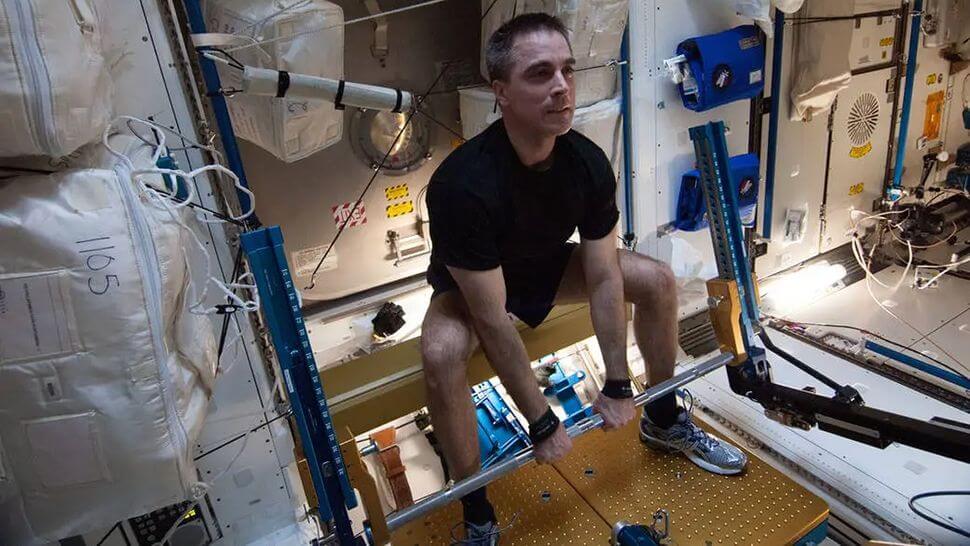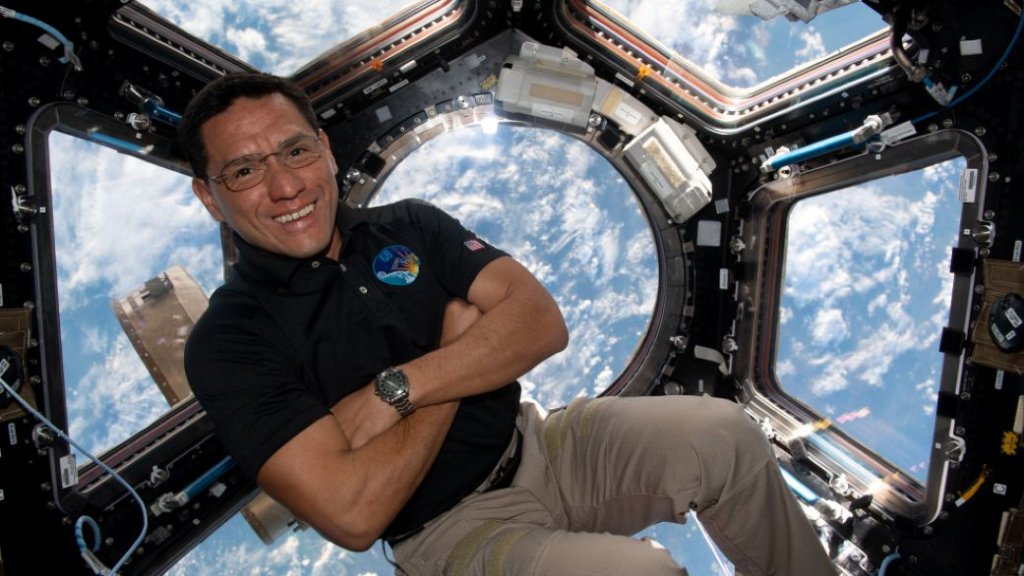NASA wants to run more year-long astronaut missions, but it’s unclear when the agency will next be able to do so.
NASA‘s Frank Rubio became the first American to spend more than 365 straight days in space recently, after his Russian Soyuz spacecraft sprang a leak and forced him (and his two Russian crewmates) to extend his stay aboard the International Space Station (ISS) by an extra six months.
Now NASA is considering how to bring more agency astronauts aloft for similar lengths of time, following successful near-year-long planned missions aboard the ISS with astronauts Mark Vande Hei (355 days), Scott Kelly (340 days) and Christina Koch (328 days).
The challenge is getting a new set of spacecraft ready to support yearlong missions — meaning the U.S. commercial crew vehicles from SpaceX and Boeing, NASA officials said in a livestreamed press conference on Thursday (Jan. 25). (All of NASA’s long missions to date have launched aboard Soyuz vehicles.)
SpaceX has been flying astronauts regularly since 2020 on its Crew Dragon, while Boeing’s Starliner may send its first crewed mission aloft in April after various technical delays. That situation makes these vehicles relatively new options for the 25-year-old ISS, and senior NASA leadership said they would like to see more service before authorizing longer missions.
Only a handful of humans have spent more than a year in space, with the longest examples (up to 437 days continuously in the case of Russian cosmonaut Valery Polyakov) on the now-retired Soviet-Russian Mir space station. NASA is working to accumulate years in orbit to get astronauts (and their support teams) ready for long-duration space missions to more distant locales, including Artemis program missions to the moon later in the 2020s and then human Mars missions, eventually.
Time in microgravity or “weightlessness” quickly induces many changes on the human body, including weakening bones and muscles, along with slightly stretching eyes and shifting blood flow. NASA’s decades of developing measures to mitigate these changes are beginning to take hold; for example, the agency changed its weight-lifting device in orbit in 2009 to give astronauts stronger exercise challenges.

Astronauts weight-lifting using the newer Advanced Resistive Exercise Device (ARED) on the ISS with pistons, instead of an older interim exercise device with resistive bands, is one factor in improving bone density for returning astronauts; that’s according to a peer-reviewed 2019 science paper published in the journal Bone.
That health progress is essential for longer, more ambitious spaceflights in the future. NASA states that a trip to Mars, using current rocket technology, would take at least six to nine months one way. Absent more research on creating artificial gravity aboard a spacecraft, astronauts would most likely spend that transit time in microgravity before arriving on Mars, a world with just 38% of Earth’s gravity.
Safely setting up Red Planet equipment and navigating a foreign world while recovering from “weightlessness” is a problem for astronauts that’s being studied in the medical literature. As with all astronaut science, more human subjects in weightlessness would make the results more representative and assist with planning future missions.
Related: Sending astronauts to Mars by 2040 is ‘an audacious goal’ but NASA is trying anyway
NASA’s human research program is seeking more one-year subjects, said Joe Montalbano, manager of the ISS program at NASA’s Johnson Space Center (JSC) in Houston. He was speaking Thursday during a press conference there that focused mainly on Crew-8, the next SpaceX astronaut mission for NASA that may fly in late February.
“What we’ve been talking about [with researchers] is, we want to get both Boeing and SpaceX flying regularly to the International Space Station. Once that’s done, we’ll figure out where to place one of these one-year missions. But right now, there’s no immediate [plan] — nothing in the near future — for a U.S. astronaut to go for a year,” he said.
Montalbano’s comments didn’t exactly rule out more Soyuz one-year missions for NASA astronauts, as astronaut exchanges are continuing between the U.S. and Russia on each other’s spacecraft through at least 2025. But neither Montalbano nor Sergei Krikalev, a senior official with the Russian federal space agency Roscosmos, speaking at the same press conference, raised that possibility.
Meanwhile, two Roscosmos cosmonauts are doing their own one-year mission on the ISS right now: Oleg Kononenko and Nikolai Chub arrived Sept. 15 aboard Soyuz MS-24 alongside NASA astronaut Loral O’Hara, who has a separate ride home after a six-month stay. Chub is a spaceflight rookie, but Kononenko has four missions already completed. In fact, with 736 days accrued before MS-24, Kononenko will easily break the all-time record of 878 days in space, which is currently held by fellow cosmonaut Gennady Padalka.
The ISS is currently approved to fly until 2030, providing six more years of opportunity to run longer missions than the usual six months each. But that timeline could potentially be extended down the road. “There’s nothing magical that happens in 2030,” Steve Stich, the manager of the commercial crew program at JSC, said at the press conference of the current 2030 extension agreed to by most partners.
Russia has committed only to 2028 as of now, although Krikalev said that timing is tied to the country’s budget and not to an ongoing “disagreement” with NASA. The United States and Russia are in a tense geopolitical moment thanks to the ongoing invasion of Ukraine by Russia, which has severed most of Russia’s international space partnerships aside from the ISS, which continues for policy reasons.
NASA officials have emphasized that station operations remain unaffected; that said, disputes at a high level have arisen occasionally about matters such as anti-Ukraine propaganda displayed by cosmonauts on the station.
Whether an extension past 2028 (or 2030, as the case may be) is feasible for the principal ISS partners is an open question. Ongoing government funding must be available, for starters. Both NASA and Russia are eyeing human moon programs in the coming decades, which are quite expensive in themselves.
Most of the ISS partners are working alongside NASA on the Artemis program for human moon missions, bringing extra costs to other space station-aligned countries. For its own part, Russia is working with China on an independent moon effort, which is another sensitive matter; high-level U.S. policy stopped most bilateral Chinese collaborations after 2011, including in space exploration, per NASA’s website.
Other considerations are ongoing, too, on the NASA side. The U.S. is completing an election cycle in late 2024 that may affect current space policy direction. Meanwhile, NASA is funding numerous commercial space station options, but these may not be ready by 2030 due to funding and technology considerations, potentially leaving a gap in low Earth orbit research that NASA is seeking to minimize.
Aside from when the ISS will cease operations is the question of how it may continue if Russia leaves earlier than other partners. The Russian and U.S. sides of the orbiting complex are tightly knit and the modules will not be able to split apart, per NASA materials.

